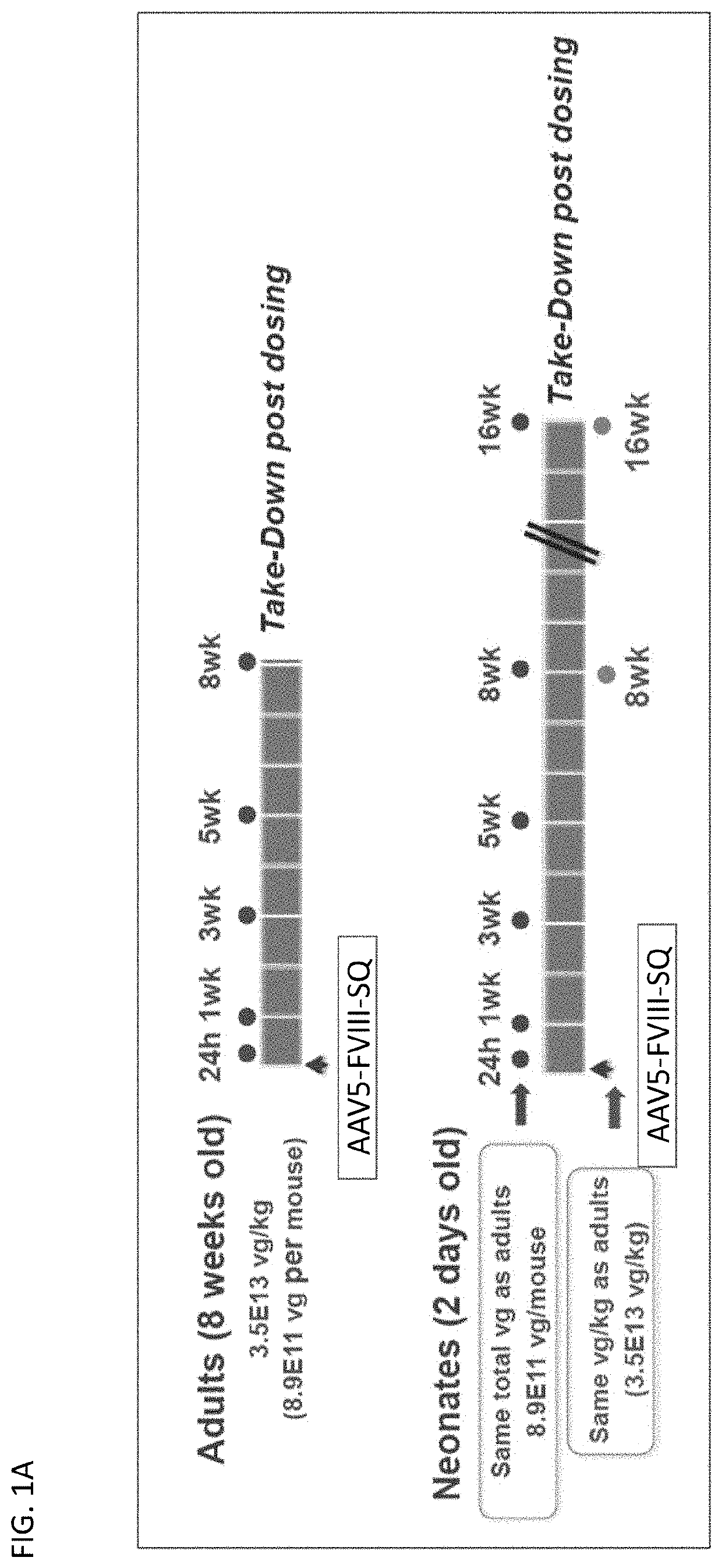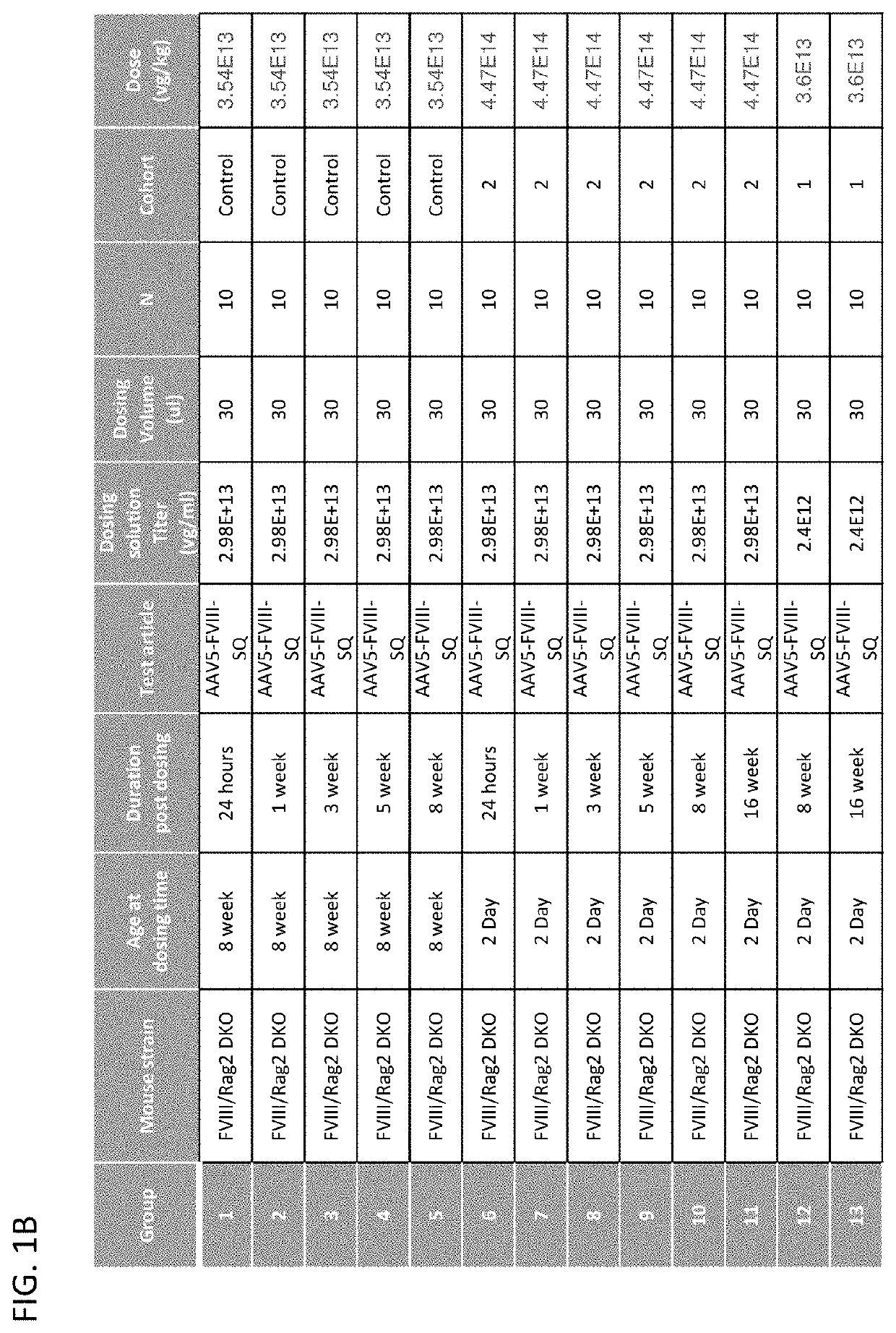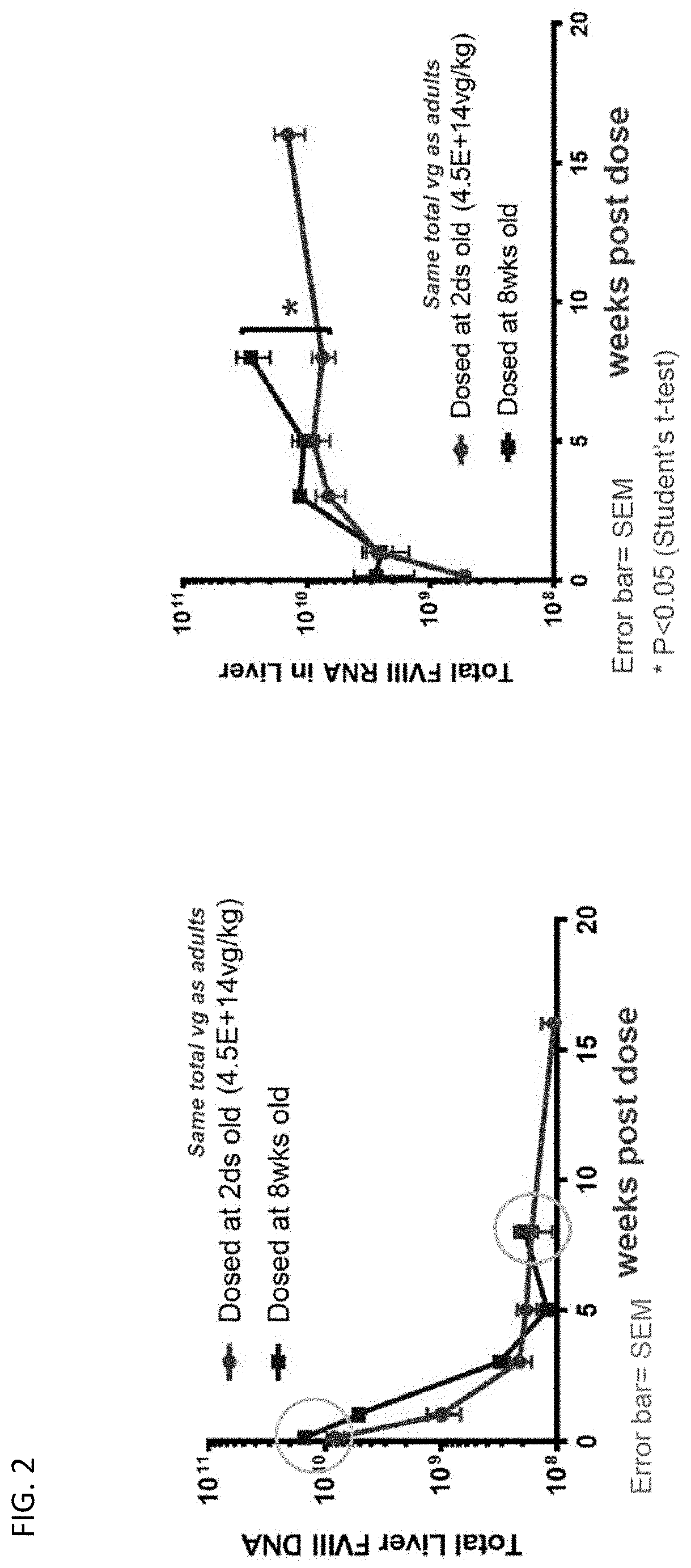Stable expression of aav vectors in juvenile subjects
- Summary
- Abstract
- Description
- Claims
- Application Information
AI Technical Summary
Benefits of technology
Problems solved by technology
Method used
Image
Examples
example 1
AAV Age Comparison Study
[0119]To examine the ability of juvenile mice to respond to AAV mediated gene therapy, two doses of an AAV expressing human Factor VIII (AAV5-FVIII-SQ) were administered to two cohorts of juvenile (2 day old) Rag2 / FVIII double knock-out mice (DKO). All doses were administered intravenously via tail veins. Adult (8 week old) Rag2 / FVIII DKO mice were used as controls and were treated with 3.5E13 vg / kg which in the adult corresponds to 8.9E11 vg per mouse. Cohort 1 of the juvenile mice (2 days old) were treated with the same dose per body weight as adults (i.e. 3.5E13 vg / kg) whereas cohort 2 of the juvenile mice (2 days old) were treated with the same absolute vg per mouse as adults (i.e. 8.9E11 vg per mouse which corresponds to 4.5E14 vg / kg in 2 day old mice). FIG. 1A and FIG. 1B provide the study design and the sample collection time points. Groups of juvenile mice were studied well into adulthood (beyond 8 weeks of age) following AAV administration.
[0120]To d...
example 2
Delivery and Expression of PAH in the Livers of Juvenile PKU Subjects
[0123]In mammals, the liver enzyme phenylalanine hydroxylase (PAH) converts excess phenylalanine (Phe) in the body to tyrosine (Tyr). In humans, mutations in the gene coding for PAH can result in diminished or lack of production or activity of the enzyme, resulting in an accumulation of Phe and decrease of Tyr levels in the body, with phenotypic consequences, including growth failure, light skin and hair coloration, cognitive deficits, sleep disturbance, and seizures. In humans this disease state is called phenylketonuria (PKU). The ENU2 mouse model of PKU (Sheldovsky 1993) was created by chemical mutagenesis, using N-ethyl-N-nitrosourea (ENU), in exon 7 of the gene coding for PAH. Phe263 is replaced by Ser263, resulting in a mild reduction of PAH protein levels, but no detectable PAH catalytic activity. This is analogous to a mutation found in a large subset of human PKU patients where Phe263 has been mutated to L...
PUM
| Property | Measurement | Unit |
|---|---|---|
| Time | aaaaa | aaaaa |
| Time | aaaaa | aaaaa |
| Time | aaaaa | aaaaa |
Abstract
Description
Claims
Application Information
 Login to View More
Login to View More - R&D
- Intellectual Property
- Life Sciences
- Materials
- Tech Scout
- Unparalleled Data Quality
- Higher Quality Content
- 60% Fewer Hallucinations
Browse by: Latest US Patents, China's latest patents, Technical Efficacy Thesaurus, Application Domain, Technology Topic, Popular Technical Reports.
© 2025 PatSnap. All rights reserved.Legal|Privacy policy|Modern Slavery Act Transparency Statement|Sitemap|About US| Contact US: help@patsnap.com



